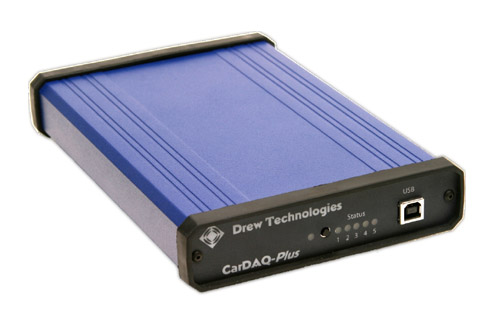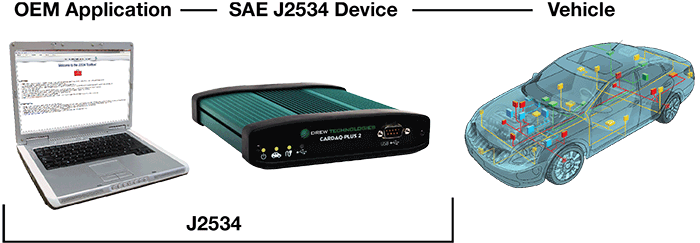J2534 Reprogramming – Does it live up to the hype?
J2534 is the standard designed by the Society of Automotive Engineers (SAE) for vehicle ECU reprogramming. In the United States, it was implemented to give workshops the ability to reprogram ECUs without a special dealer-only tool. J2534 enables flash programming of an emissions-related ECU, regardless of the communication protocol. Basically, all that’s needed is a J2534 “pass thru” device and an OEM-supplied calibration file.
The Environmental Protection Agency (EPA) and California Air Resources Board (CARB) petitioned for universal reprogramming. Their argument was that, giving independent shops the ability to reprogram ECUs, would reduce emissions. In 2002, SAE developed the J2534 standard to help make universal programming a reality.
But are J2534 devices all they’re cracked up to be? Over the years, SAE has refined J2534, implementing new versions along the way. Some argue, however, that J2534 tools are never quite good enough.

J2534 pass thru devices vs. dealer scan tools – enhanced OBD
In addition to programming, some J2534 pass thru devices provide enhanced OBD, such as data monitoring and code reading. For dealer-level diagnostics though, most need an OEM software subscription. For example, the Techstream scan tool software is $55 for a two day subscription from the Toyota website. Once this subscription is purchased, a capable pass thru device will provide OEM-level diagnostics.
It should be noted that many J2534 devices don’t have the ability to display scan tool-type data at all. They’re strictly programming devices.
J2534 pass thru devices vs. dealer scan tools – programming
Good scan tools are perfectly capable of reading live data and codes. What most technicians are interested in a J2534 pass thru device for is programming.
There are two parts to the J2534 standard – 1 and 2. J2534-1 defines features for a device that performs reprogramming of emissions ECUs. On the other hand, J2534-2 defines an optional feature for reprogramming non-emissions ECUs.
A dealer-level scan tool will be capable of programming all modules, but a J2534 pass thru device may not be. Exactly which modules are programmable with an aftermarket tool depends largely on two factors. The first is the tool itself, and the second is manufacturer coverage.
Not all tools are created equal. According to discussions on iATN (International Automotive Technicians Network), many technicians prefer the Drew Technologies brand of pass thru devices. The company’s CarDAQ line of tools offers J2534-1 and J2534-2 capabilities, along with OEM diagnostics. If you’re looking to service just one brand of car, there’s also the MongoosePro. This OBD adapter can be used in conjunction with OEM subscriptions to perform re-programming and access OEM data.
There are many other pass thru device manufacturers besides Drew Technologies. Some recommended companies include Autel, Snap On, Ease Diagnostics, Bosch Diagnostics and Autologic.
Even the best pass thru devices are limited by what the OEM provides. Some manufacturers, like General Motors, offer reprogramming calibration files for all modules. Chrysler is more stingy – it only offers reprogramming of the ECM and TCM. On its website, Drew Technologies has a list of what each OEM provides: http://drewtech.com/technician/index.html

How to reprogram an ECU with a J2534 device
You’ve got yourself a J2534 “Pass Thru” device. Now what? These are the steps you need to take to program a module.
Determine whether a module update is available: The saying goes – if it isn’t broke, don’t fix it. This holds true to modules. Check to see whether or not an update is available before reprogramming a module. You only want to reprogram when there’s a TSB or service information to address a particular concern.
Gather the needed supplies: You’ll need some additional equipment besides the pass thru device. This includes a laptop, a battery maintainer and a stable internet connection. Plus, you'll need an active subscription to the OEM you want to reprogram.
Consult the factory repair information: Before you get started, consult the OEM instructions for module reprogramming. There may be some extra steps you need to take before or after programming.
Connect the battery maintainer: Proper battery voltage is essential during re-programming. If battery voltage is lost, errors may occur and/or the ECU may be permanently damaged. It’s also important to keep your laptop plugged into a power source, so that it doesn’t die during the re-programming process.
Download the OEM calibration file: The next step is to visit the manufacturer’s website and download the calibration file. You will save the file to your laptop. Your pass thru device may be able to help you navigate to the OEM website, or you can use the list from Drew Technologies, provided earlier in this article.
Connect the pass thru device: Connect the pass thru device to you computer and to the vehicle’s OBD port.
Follow the programming instructions: Following the programming instructions provided by the OEM.
Complete the process: Once programming is complete, there should be a prompt on your computer. It will indicate the job is done.
Even if it isn’t perfect, J2534 gives technicians an edge
The J2534 standard might not be perfect, but it gives technicians an edge. Now, in the United States, many modules can be programmed without a trip to the dealership. And that’s definitely progress. Let's hope Australia follows suite soon!